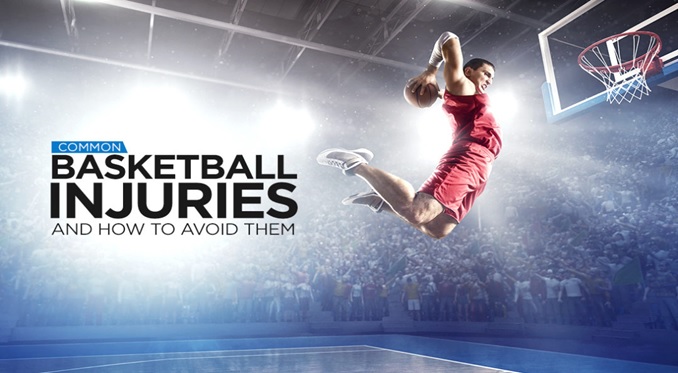An Overview of Basketball Injuries and How to Avoid Them

In
the United States, basketball comes only second in popularity after football.
Over 26 million Americans are known to participate in the sport, with a
majority of being are college and high-school teams. However, as of 2017,
basketball witnessed about 500,000 injuries, which is the highest, leaving
behind football and cycling at 341,000 and 457,000, respectively, according to
data released by the National Safety Council (NSC).
No wonder the global cartilage degeneration market is expected to reach $14,580.10
million by 2027, according to figures released
by Report Linker.
This number is mainly attributed to the growing incidents of sports-related
injuries. Basketball knee braces can minimize the risk of meniscus tears and
offer support through metal sidebars and silicone patella rings, according to
experts at Aidfull. Besides
investing in supports for basketball injuries, here are some tips recommended
by professional players to avoid basketball injuries.
Facial Injuries
No matter how entertaining a match is, taking an accidental elbow on the face is never fun. It can lead to bleeding lips, a dislocated nose and concussion. Getting hit by a ball flying during the game can heighten the risk of facial bone damage. To keep yourself safe, invest in sturdy face guards, which can protect you against orbital, maxillary, and nasal injuries. Consider athletic glasses and teeth protective gear, if possible.
Ankle Injuries
Lateral ankle sprains are extremely common in basketball. All the jumping, landing and running can lead to strain and sprains, and the ankle might swell up mid-game. To avoid such a situation, wear basketball ankle braces. They come with bilateral semi-shield plastic shells to offer optimal protection from sports injuries. These sleeves can also prevent high ankle sprain, which affects the ligaments between the calf bone and shin bone.
Knee Injuries
If you suffer from pivoting or tearing of the medial collateral ligament, you
could end up with a serious knee injury. While these do not require surgical
intervention, both the conditions can be extremely painful. When left
unattended, they could even end your basketball career. So, to protect your
knees from sprains, consider wearing the best basketball knee pads or braces
throughout the duration of the game as well as during practice sessions.
Shoulder Injuries
Rotator cuff tendonitis is common too, which can lead to irritation of the tendons and inflammation of the bursa lining, according to an article on MedlinePlus. The treatment for grade 1 and 2 injuries can be initiated with a basketball shoulder support brace. They are easy to wear, remove and can accommodate all movements comfortably.
Wrist Injuries
You might experience jammed, dislocated, or fractured fingers from the
high-speed ball. The wrist can also get twisted from rigorous passing and
catching. While looking for braces for basketball players, do consider buying
adjustable wrist protectors as well. They offer the right support, besides
reducing stiffness and sprains.
Supports for basketball injuries are imperative for both beginners and pro-level players. They help keep bones in the correct alignment, while ensuring the freedom of movements on the court.
I like this article a lot, one of the worse things in all sports is injuries. A lot of players are side lined for too long, and some careers are even ended. I like the info in this article because it is accurate. When it comes to ankle and knee inquires one thing you can do is strengthen your lower body by vertical training. I will link to the best programs https://basketballmentality.com/best-vertical-jum… Doing this type of training will have the befit of decreased injuries.
Great Opportunity for Basketball Players and related professionals! We are calling all basketball professionals like players, coaches, scouts, general managers, and agents from around the globe to our platform to see our highlight reel and an online video interview with us will give you the chance to showcase your strengths in the best way possible. For booking an interview with us click on link: https://internationalball.tv/basketball-player-lo…